Ghosts of the CPR Stirling Subdivision
Being part of a railway museum (and in charge of the collections/archives) a person comes across some interesting donations, such as this series of photos from retired Canadian Pacific Railway engineer Nick Korchinski from Lethbridge, Alberta.
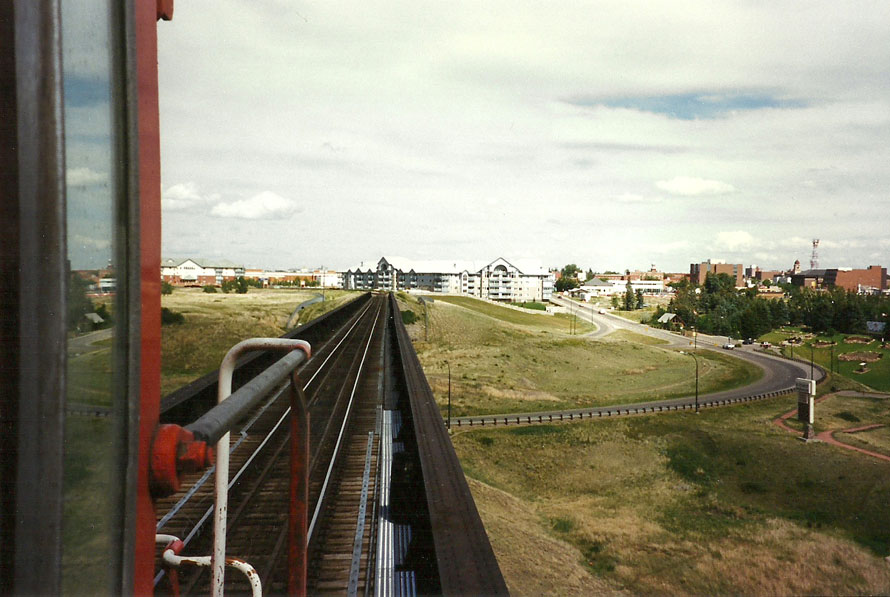
The donation is photos from his trip taking empty grain hoppers to the last grain elevator holdout on the CPR Stirling subdivision at Orion, Alberta, on a warm fall day in September 1998. Nick takes photos from the cab of a worn GP38-2 as they head south from Lethbridge onto the 85-pound territory of the Stirling subdivision, passing vintage wooden grain elevators, several of which fall from memory within years of his trip.
Background
A little bit of the history of the railway line. The Stirling subdivision originally ran between Lethbridge, Alberta and Manyberries, Alberta. The subdivision was named after the junction point “Stirling”, where the west running Cardston subdivision and south running Coutts subdivision met. Stirling is named after J. A. Stirling, an executive in a company in England that helped finance the Alberta Railway & Coal Company in their expansion southward from Lethbridge toward Great Falls, Montana, in the 1890s. Years later the Stirling subdivision was reorganized to start at Stirling and head east, and the Coutts (now Montana) subdivision was extended to start at Lethbridge and head south towards the US border.
In 1915 at Stirling, CPR began construction of a new branch line, heading eastward and was able to reach Manyberries in late November, 1916. It wasn’t until 1922 when the ‘gap’ between Manyberries and the neighboring subdivision in Saskatchewan (the Altawan) was linked together. Trains that operated on this line were mixed, meaning both freight and passenger cars were part of a train, though most times the freight took priority.
By the early 1960s, CPR began cutting and trimming its branch line operations, particularly the money-losing mixed train operations. Sometimes the federal government agreed to their case and some service was dropped in areas, but sometimes the locals rallied in support of the mixed train service and the government then denied CPR the chance to drop the service in that area. With the reduction in some of the freight operations including the closure of some of the older, less efficient wooden grain elevators, the writing was on the wall. Finally, in 1965, the last mixed train operated out of Lethbridge, heading eastwards to Shaunavon. After this, CPR was content to operate freight assignments and grain train extras “as needed,” with the crews operating out of Assiniboia in the east, or Lethbridge in the West.
By the mid-1970s and early 1980s, with freight traffic again decreasing, and with the substantial investment required to keep the lines running for another long-term period, CPR began its cutting process. By the late fall of 1989, they made their case to the National Transportation Agency (NTA) who approved the abandonment of a portion of the Altawan sub between Consul, Saskatchewan, and Manyberries, Alberta. The tracks and rail infrastructure were removed not long afterwards. In April 1990, CPR applied for and received approval from the NTA for abandoning the section of track between Manyberries and Orion. The grain elevators at Orion, Nemiscam, and Etzikom continued to receive grain from the local area farmers, though the writing was on the wall for these last remaining holdouts. (Footnote: in August 1996, the NTA approved CPR’s request to abandon the section of track between Orion and Etzikom)
The final destination was the last remaining grain elevator in Orion, Alberta
Now let’s fast forward to 1998! In early September, CPR engineer Nick Korchinski and his conductor assembled a grain train of empty hoppers at the Kipp Yard on the west side of Coalhurst. They would proceed with three engines; CP #3015 (GP38AC), CP #3060 (GP38-2), and CP #3028 (GP38-2) with #3060 and #3028 positioned rear end first so that they would be the leading units on the return trip to Lethbridge.
The final destination was the last remaining grain elevator in Orion, Alberta, operated by the Alberta Wheat Pool. Mind you, they would be dropping off empty hopper cars at the remaining grain elevators along the line and picking them up on the return trip. The remaining Orion elevator, built in 1916 as a Pioneer Grain, had a neighbor, a 1929 Alberta Wheat Pool that was later moved closer to the other grain elevator to allow them to be “twinned” for additional grain storage. Not far down the track (a little way to the west) there used to be a vintage 1916 Alberta Pacific elevator, which was demolished in 1988 (still sporting its original Alberta Pacific logos & lettering). The remaining “prairie sentinel” was painted and lettered for the Alberta Wheat Pool, or AWP, or simply “the Pool”, a farmer-owned collective founded in 1923 and for many decades the province’s biggest grain handling firm. At their peak in the mid-1930s, they had over 800 elevators scattered across the province in the mid-1930s.
After the train was assembled, they headed east through Coalhust, across the High-Level Viaduct to the east end of Lethbridge to the “Montana” siding, where the switch was turned to allow the train to head southeast onto the Stirling subdivision. At Stirling, another switch was turned to point the train eastward on the 85-pound territory. After crossing Highway 4, just on the east side of the village of Stirling was the next-generation of grain elevators; a high-output vertical concrete AWP (later Agricore) elevator under construction that would replace the last remaining wood elevators in Stirling. Continuing east the train passed the remains of the siding at Judson that was removed not long after the two-grain elevators, an AWP & Federal grain, that were closed in the mid-1980s. The Federal elevator wasn’t painted over when it was purchased by Alberta Wheat Pool. Eventually, the train crosses Highway 36 and approaches the hamlet of Wrentham.
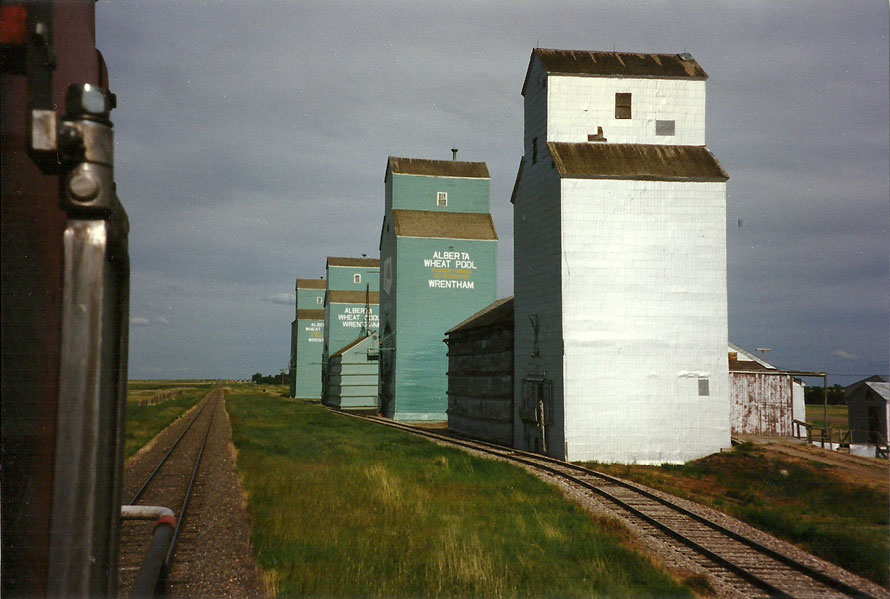
The hamlet of Wrentham still boasted four-grain elevators; a 1925 Ogilvie Flour, a 1917 N. Bawlf Grain Co. (later Alberta Pacific / Federal), a 1928 Alberta Wheat Pool, and a 1968 Alberta Wheat Pool elevator. The Ogilvie was owned by a local farmer, and the remaining three elevators were used by AWP. On a side note, the Ogilvie for a short time was also operated by AWP from 1960 to 1968, before it was sold. It is currently the last Ogilvie Flour marked elevator left in the province of Alberta. The middle two elevators in Wrentham were closed and demolished within months of each other in 1999, and the last in the row, an AWP elevator would be sold to a local farmer in 2000. After Wrentham, the train heads east past another removed siding, located at Conrad. At one time, two-grain elevators were located here. The Conrad elevators were closed in the mid-1980s and were demolished not long afterwards.
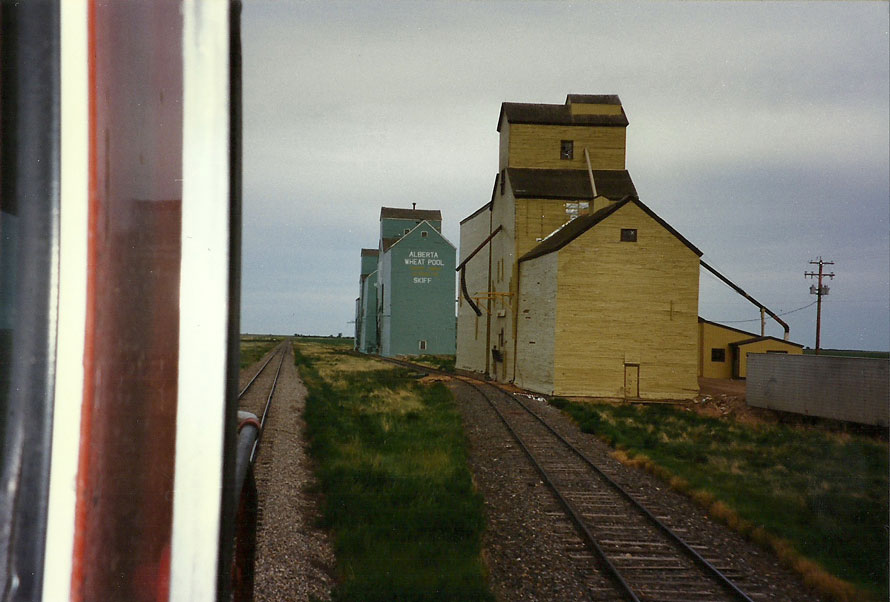
After Conrad, the grain elevators in the hamlet of Skiff appear on the horizon. There were three elevators located here but now only oneremains. From the west was a 1929 Ellison Milling (Parrish & Heimbecker), a 1929 Alberta Wheat Pool, and a 1954 AWP. The two Pool elevators were closed at the end of the season in 1999 and demolished a year later, while the P&H was sold in 2002 to a local farmer who continues to use it to this day.
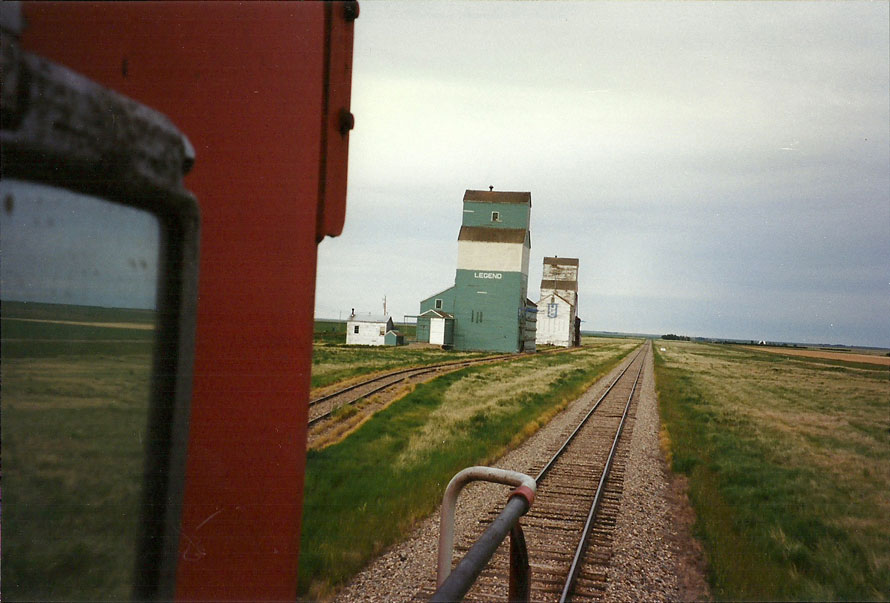
Continuing eastward, the train passes two remaining grain elevators at Legend; an AWP & United Grain Growers example. The AWP elevator was built in 1929 and sold to UGG in the late 1960s, meanwhile, the UGG was built in 1936 and would operate both elevators until closing them in 1998. The annex of the UGG elevator was sold to a farmer south of Nemiscam after the elevators closed, and it was relocated to the farm where it sits abandoned to this day. The author had a chance to peek inside the annex and it included a separate man lift system!
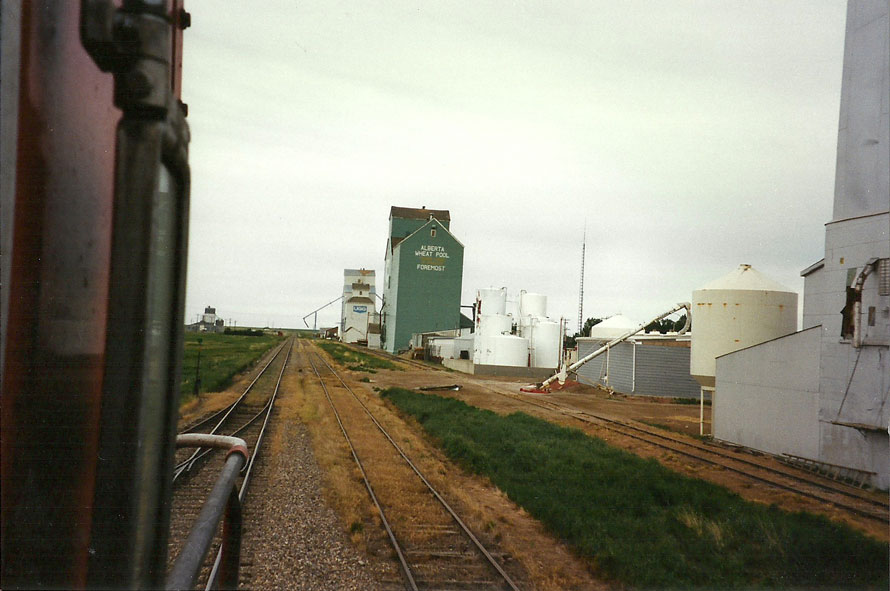
After Legend was the town of Foremost, where a modest row of grain elevators was in operation. From the west working our way east was a 1983 AWP Buffalo Sloped Bin 2000 grain elevator (closed in 2001, sold to local farmer, and then sold to new short line operator Forty Mile Rail), a 1915 Lake of the Woods Milling elevator (sold to AWP in 1960 and then to a local farmer in 2001), a 1954 AWP elevator, and a 1917 UGG elevator that was twinned with an smaller elevator. The UGG elevator was closed after the harvest season in 2001 and demolished in early 2002.
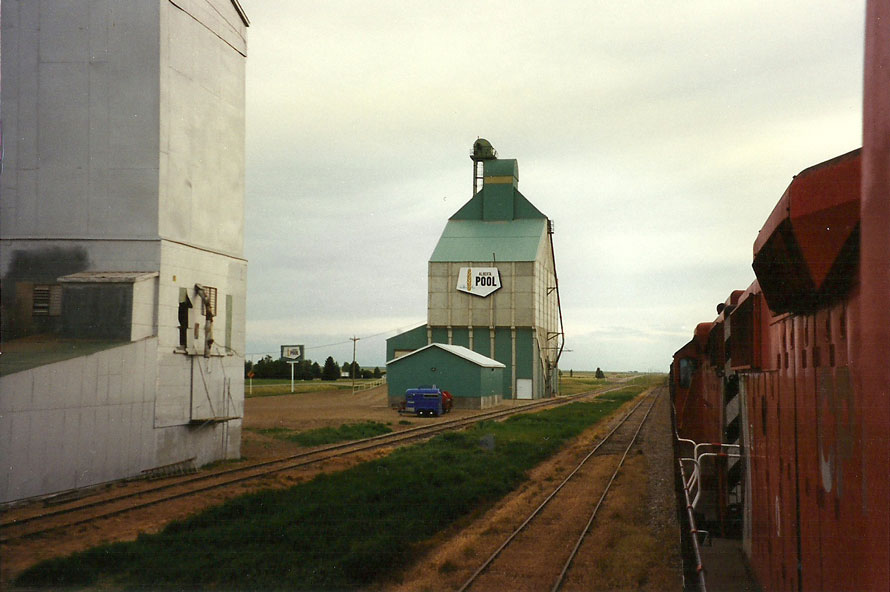
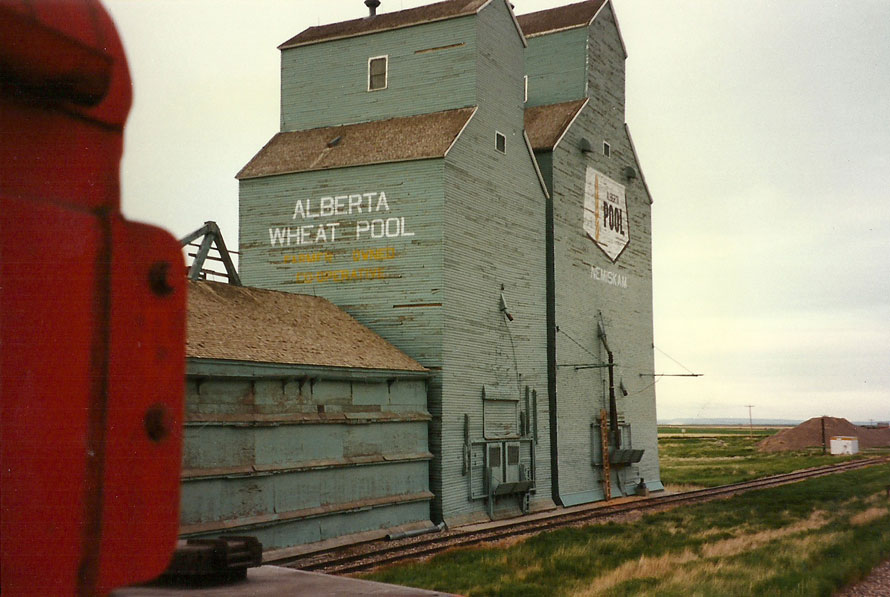
After Foremost, the next siding was Nemiscam (or Nemiskam). At one time there were four elevators here; a 1917 UGG that was closed in 1982, two AWP elevators (1928 & 1969), and a 1915 Alberta Pacific Grain that was sold to UGG in 1969 and operated until closing in 1988. These remaining AWP weathered elevators closed in 1997.
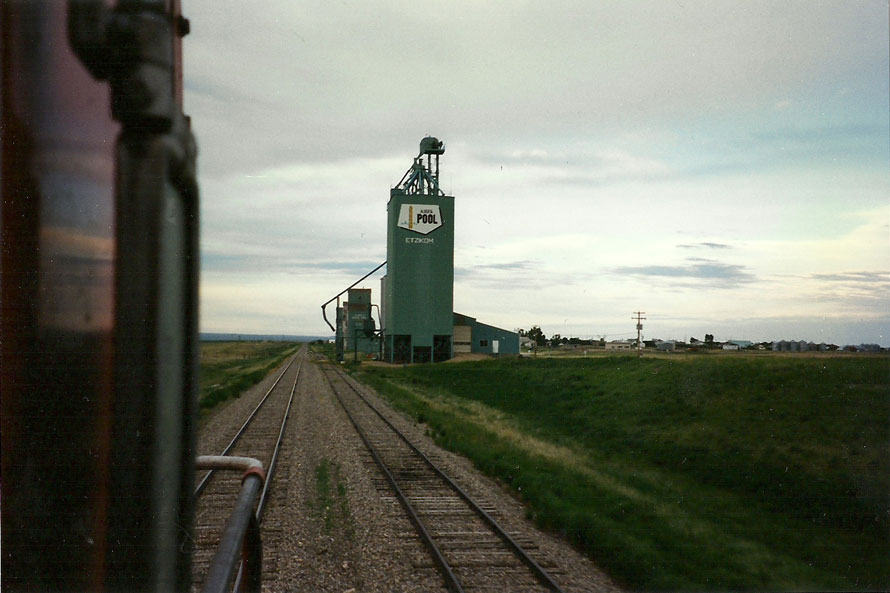
After Nemiscam, the track turned slightly southeast towards Etzikom, where four elevators were remaining; a newly built steel AWP elevator, a set of twinned elevators (1928 AWP & 1954 AWP), and a 1917 UGG elevator that closed in 1995. The steel AWP design is a unique one, being only one of two built in the province of Alberta, with the other example at Starland. The design incorporated bolted steel panel / composite wall panel and was an attempt to save costs on building new elevators on reduced capacity grain branch lines. It operated from 1988 to 2001, when it was closed and then sold to a local farmer who continues to use it. The author remembers seeing the elevators in place (as well as the track) in Etzikom! After Etzikom the branch line went through scrub grass and over low rolling hills curving southeast again past Pakowki, and in the distance, a lone, vanishing sentinel was standing . . . Orion!
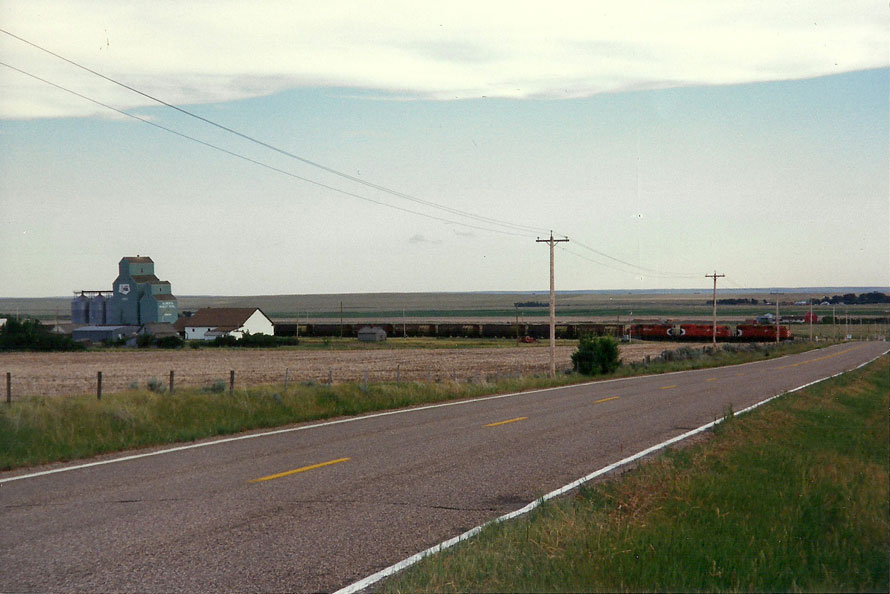
At the elevator siding, the front locomotive is unhooked to allow the rear two locomotives to push the empty hoppers up the elevator track to be eventually filled up by the elevator agent. In the meantime, the former front locomotive is then backed up on the main track enough to allow the former rear two locomotives to be placed in front for the return journey to Lethbridge. After the hopper cars are in their spots on the elevator track and secured properly, the locomotive units are parked and turned off. The taxi from Lethbridge is waiting nearby to pick up the train crew and take them back to their homes in Lethbridge. A couple of days later the taxi returns them both to quiet Orion where they hook up the loaded hoppers and head back to Lethbridge.
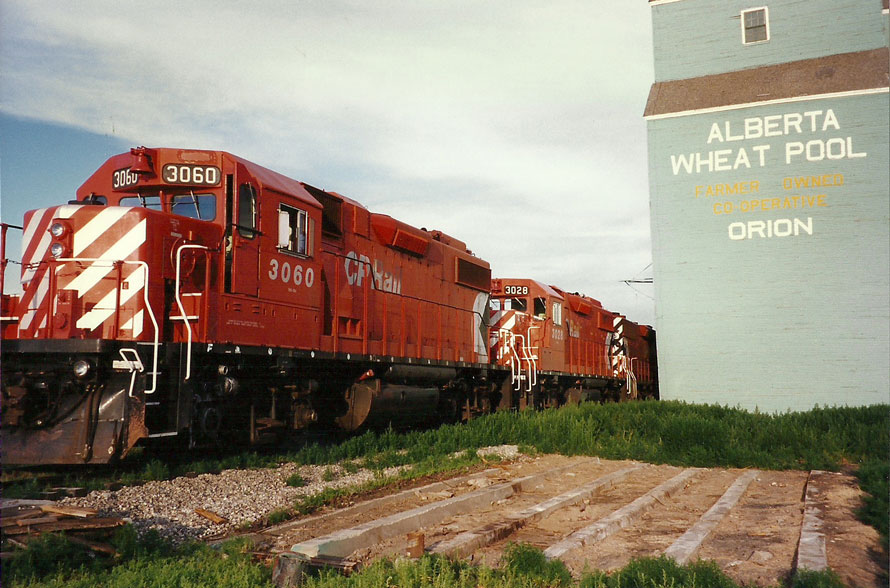
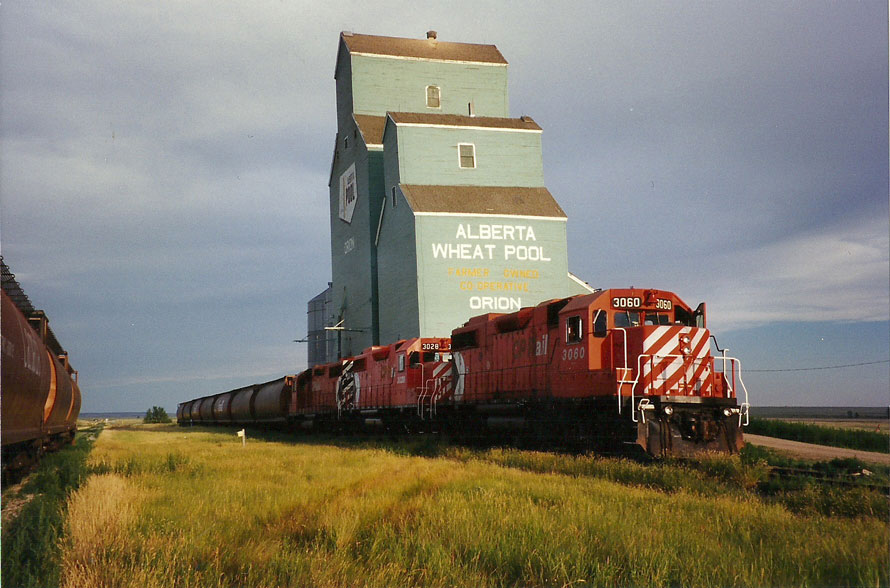
A few months after the last trip, the grain elevator at Orion was closed and then demolished, ending close to seventy years of service to the surrounding farms in the area. The line between Orion and Etzikom would disappear from the horizon by the summer of 1999.
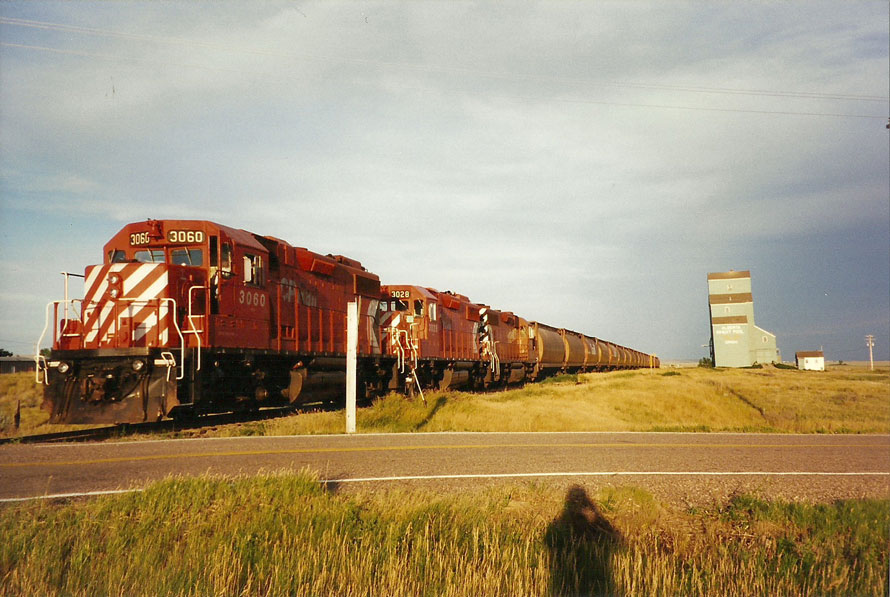
Thank you, Nick, for “looking back” to photograph these fleeting moments in time.
Jason Paul Sailer – Text Copyright 2019
Nick Korchinski – Photographs Copyright 2019
Certainly uncommon to see an engineer’s view from the cab, and on a viaduct like this seems even less common. Quite an interesting text with these images. Thanks.
I played basketball with a Nick Korchinski at the University of Alberta! Any relation? Jim Griffin
I’m glad that Nick recorded this bit of history and shared it with the museum. Thank you for sharing it with everyone, Jason.
Thanks for the photos and engineer’s perspective. I grew up South of Legend and delivered grain to the Legend and Foremost UGG and Pool elevators. Dennis Kiffiak
Neat Dennis! Great memories! We hauled grain to the AWP elevator at Dunmore
Thank you for this interesting and informative post! A similar scenario to what occurred with the Langdon and Acme Subdivisions (service ceased on both on July 31, 1996).